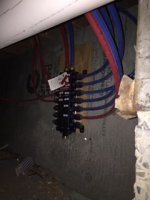dasher
New Member
I recently had a remodel moving the sink further from the hot water heater (Tank style) . The run is now much longer than the 10 feet or so the sink moved. I wish to get hot water to sink and dishwasher (co-located) much quicker to avoid waste and time. Is a small tankless heater near the sink the answer? Or, I've heard of recirculation pumps etc. If a tankless heater is the the best choice, What size? (I will keep my tank heater) The water lines are all indoor or in heated crawlspace from Hot water heater (tank). I presume a small one since I only want instant hot water for a short time. It would need to be electric. The lines are primarily the red and blue plastic type for the new section. Thanks for your advice.

